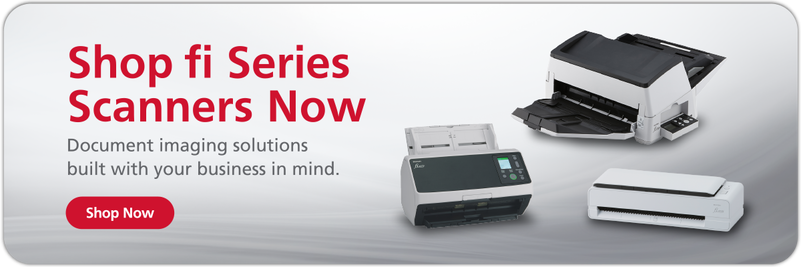A few extra inches of paper unlocks a whole new world of scanning possibilities. Here’s what to look for in a legal size scanner.
Many businesses use scanners to keep their operations digitized and efficient in the modern era. Even though most scanners can handle most paper sizes (including legal size paper), your specific professional field might present unique needs. It’s important to find a scanner that supports the document types you work with most, whether that means protecting delicate archival materials or legal size scanners that support huge quantities of paper. Attorneys and paralegals, for example, will have special considerations that should stay top of mind while shopping around for a legal document scanner.
In this article, we’re going to dive into all the key features of a quality legal size scanner so you can find the best one for your needs.
Check out our guide, The 11 Types of Scanners Every Pro Needs to Know, for even more expert advice and information.
What is a legal size scanner?
A legal size scanner is a scanning device that can process paper measuring 8.5 inches wide by 14 inches high. Legal-size paper was popularized by lawyers, since they needed more space to cram complex and lengthy details into contracts and other official documents. With that said, many professionals and companies outside the legal profession use this type of paper and need a powerful device that can digitize their documents. The right legal document scanner can help you share and collaborate on files remotely or create secure backups of important paperwork and records.
What to look for in a quality scanner for legal size paper
No-fuss paper feeding
It’s always a good idea to determine the outlying sizes of the documents you are going to scan. If you use a lot of wide documents, look for a scanner that can scan double letter size (11” x 17”). Your legal size scanner should enable stable paper feeding, with a tray that keeps documents upright, aligned, and ready to scan. The extra height on legal paper (legal size is three inches taller than standard 8.5” by 11” paper) requires additional support so that documents don’t tip over or fold backwards before they’re scanned. You should also look for tray adapters that can be adjusted to neatly guide documents of any width into your scanner.
For delicate, old, or bound documents, consider a scanner with a flatbed. Our advice: don’t buy a flatbed-only model. A combination unit with a feeder and flatbed is a better bet, and will save you a huge amount of time and money. Flatbed usage will always be the exception of scanning, not the rule. The built-in flatbed on the fi-8270, for example, provides additional utility for those who need to scan extra thick documents, multi-sheet publications, or bound periodicals.
Batch and volume scanning
Make sure that your legal size scanner is robust and heavy-duty enough to handle large volumes of paper quickly, without breaking down and harming time-sensitive deadlines. If you select a scanner that can hold 100 sheets of legal size paper, for example, it’s important to check for internal tech capabilities like automatic separation control, which adjusts the scanner’s separation torque as the paper load changes. If you’re batch scanning documents that must remain in a predetermined order, look for stacker support features that keep papers neatly organized and cut down on post-scan fussing.
Did You Know? The RICOH fi-8170 can scan up to 70 pages per minute and 10,000 pages per day. Click here to learn more.
Document protection functionality
Regardless of whether you’re scanning one legal-size sheet at a time or batch scanning a series of papers, it’s important to select a scanner that automatically ensures your documents are protected and preserved. Rogue staples, bent corners, and other abnormalities can cause paper jams that lead to permanent damage of the original copies you’re scanning; when you’re dealing with important documents, that can be a major mistake. High-tech scanners use image and even sound monitoring to check for skews and pause progress if anything is stuck or out of alignment.
Clear image quality
If you’re focused on legal document scanning, you may not think of image quality as your number one priority. But even if you’re not scanning photos, you’ll still want to keep image quality as high as possible. Image quality dictates how scanned text reads, so a high quality scan will make sure every word is legible and you’ll never mistake a contract that ends in 2023 for one that ends in 2028. It’s also easy to see how graphics factor into text-heavy legal documents — just think of charts, company logos, and team headshots as a few examples. Make sure your legal size paper scanner can automatically identify graphic images when they do appear, and can then digitize them with the highest possible resolution and no color shifts.
Smart scanner software
Need to find a complete quote quickly? Trying to double check a reference but can’t remember where you saw it? Searchable text is an important software feature for finding key information inside of scanned documents. Search by keywords or memorable phrases, and you’ll receive a list of matching documents instead of having to manually comb through thousands of PDFs one at a time. If you do business internationally, check for scanner software that can recognize multiple languages.
Scanning software should also automate file naming so that you don’t have to stand over the machine and input a title and save location with each new scan. When processing legal paperwork, for example, smart software might find the case number and automatically add it to the PDF file name. By automatically reading barcodes and asking for human input only when absolutely necessary, smart scanner software frees you up to do other things while it processes and organizes paperwork.
Ease of use & connectivity
The last thing you want to worry about when you purchase a new legal document scanner is figuring out how to operate it. Look for a machine with an intuitive interface that allows you to clearly and easily select any functionality you might need, from scanning jobs to cleaning procedures. It’s also a good idea to check your scanner’s connectivity options, including USB, Network, and Wi-Fi connections.
Did You Know? The RICOH fi-8170 can also scan documents up to 7mm thick, including passports and pamphlets. Click here to learn more.
Our recommendation: RICOH fi-8170
Those in the market for a legal size paper scanner have no shortage of options. We take great pride in having spent the last 50+ years researching, designing and developing some of the most advanced and powerful electronics in the world, including our professional grade fi and SP Series scanners.
Built to purpose for the most demanding document handling jobs, fi and SP Series scanners are capable of processing tens-of-thousands of pages per day at the highest levels of accuracy. Their intuitive integration capabilities with all existing work suites minimize time-to-value for businesses looking to invest in tools that will pay dividends for years to come.
The fi-8170 is a powerful legal size scanner with a range of high-volume and high-speed features and a compact footprint. With the ability to scan up to 70 pages per minute and as many as 10,000 documents in a day, the fi-8170 unlocks rapid and reliable performance. The included PaperStream Capture Pro software ensures clear high resolution images, data extraction, indexing, and more. The fi-8170 is an excellent choice for anyone seeking a legal size paper scanner that packs big performance into a small machine. Click here to learn more or shop the rest of our production scanner line.













